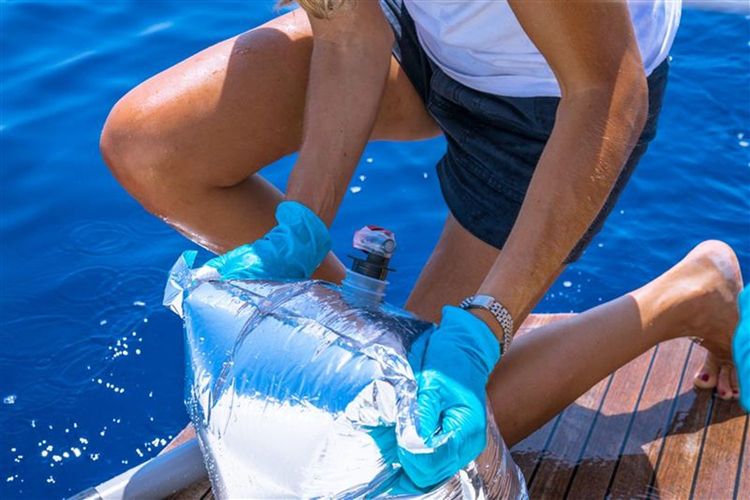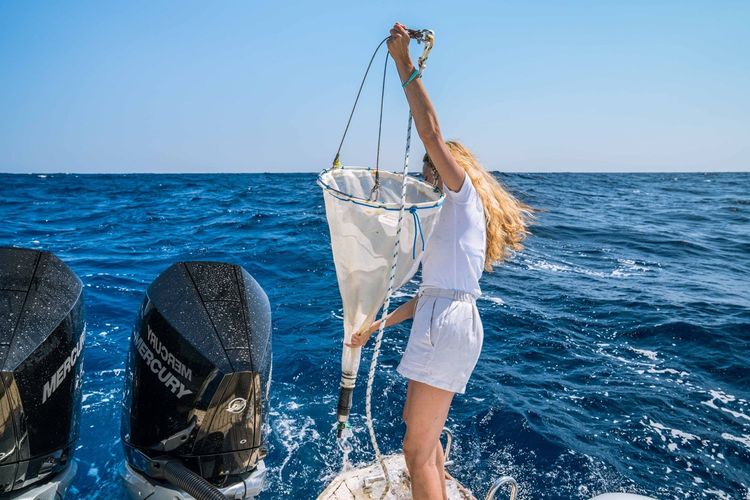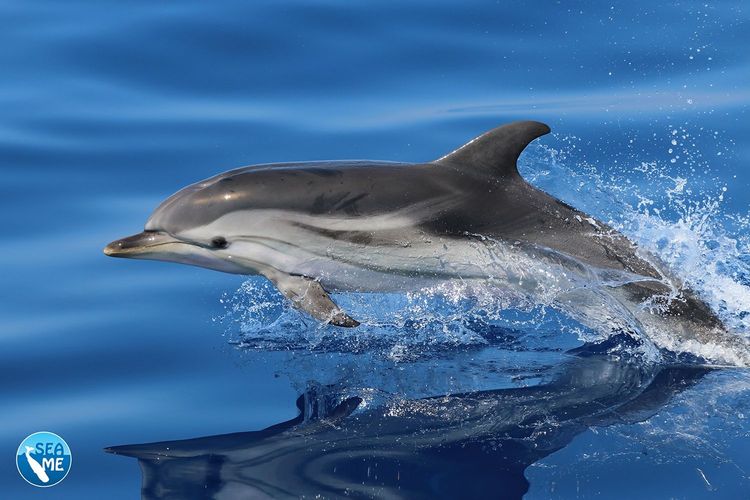
A new study, published in the journal Marine Environmental Research, opens promising new avenues for the future of marine monitoring in the Mediterranean. At the heart of the research is the M.A.R.E. project (Marine Adventure for Research and Education) – an initiative by Fondazione Centro Velico Caprera with scientific coordination by One Ocean Foundation – which combined traditional visual surveys with the collection of environmental DNA (eDNA) in the waters of the Tyrrhenian Sea.
What’s new? The development of six new species-specific genetic markers for monitoring marine animals (such as sea turtles and fin whales), and the discovery of elusive species like the Risso’s dolphin, detected for the first time at a Mediterranean-wide scale using eDNA.
A Mediterranean Sea at risk
The Mediterranean Sea is home to around 8% of the world’s known marine species, but its biodiversity is under threat from multiple pressures: habitat destruction, pollution, the introduction of invasive species, and overexploitation of resources. Many iconic species, such as fin whales, sea turtles, and sharks, are now considered at risk or remain poorly understood due to a lack of data. Tackling this challenge requires new tools and greater societal involvement.
The M.A.R.E. Project
Between April and July 2022, the M.A.R.E. project’s catamaran sailed across the Tyrrhenian Sea to collect water samples and record marine wildlife sightings. On board, researchers and over 100 participants – including influencers and volunteers – monitored the presence of dolphins, turtles, manta rays, and other animals. The water samples, collected at 36 different points, were analyzed to search for fragments of genetic material (eDNA) left in the environment by marine organisms.
Key findings: eDNA reveals who lives in the sea
The environmental DNA technique allows researchers to gather information non-invasively about the presence of certain species in a given area, based on the genetic material they naturally release into the environment. By filtering water and analyzing it for species-specific genetic markers, it’s possible to confirm whether a species has recently been in that location.
The results were remarkable. Thanks to eDNA, the presence of 6 out of 7 target species was detected, including:
• The striped dolphin was the most frequently detected species, both through sightings and genetic analysis.
• The Risso’s dolphin, an elusive and previously under-documented cetacean, was detected in multiple samples, making it the second most frequently identified species through eDNA.
• Traces of fin whales, loggerhead sea turtles (Caretta caretta), basking sharks, and even the invasive Atlantic blue crab were also found.
The sperm whale, despite being known to inhabit the area, was not detected—likely due to its seasonal mobility or the challenge of detecting its DNA near the surface.
A new frontier in environmental monitoring
The project led to the creation of six new genetic markers—essential tools for detecting specific marine species. Thanks to eDNA, it will be possible to monitor populations of cetaceans, sharks, and turtles more efficiently and non-invasively in the future. This method does not replace traditional visual surveys but complements them, expanding our ability to observe life in hard-to-reach areas or detect elusive species.
Read more articles

Zooplankton, sentinel of marine pollutants: risks for basking sharks, fin whales, and devil rays

A biodiversity hotspot for cetaceans in the Mediterranean Sea
